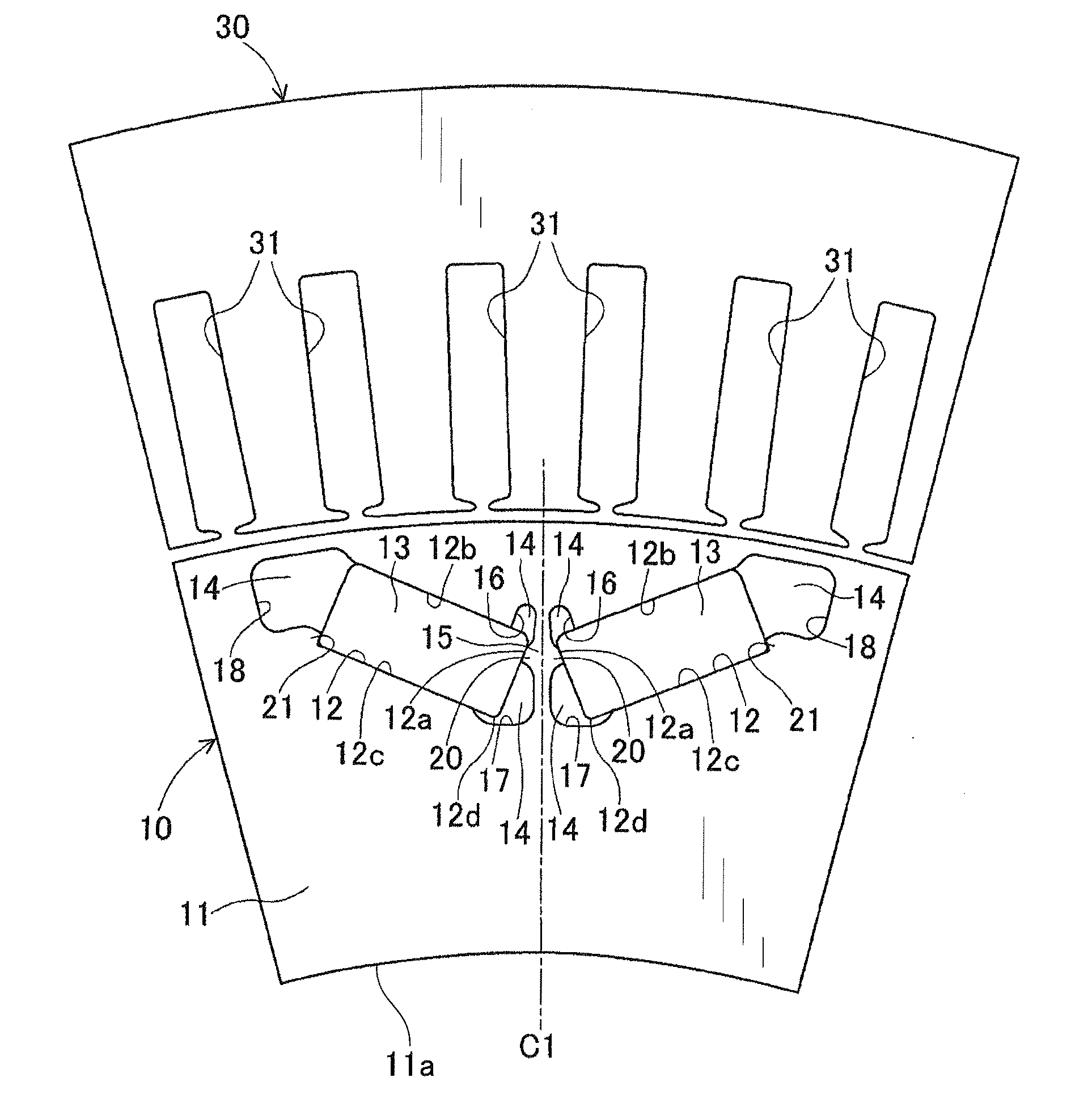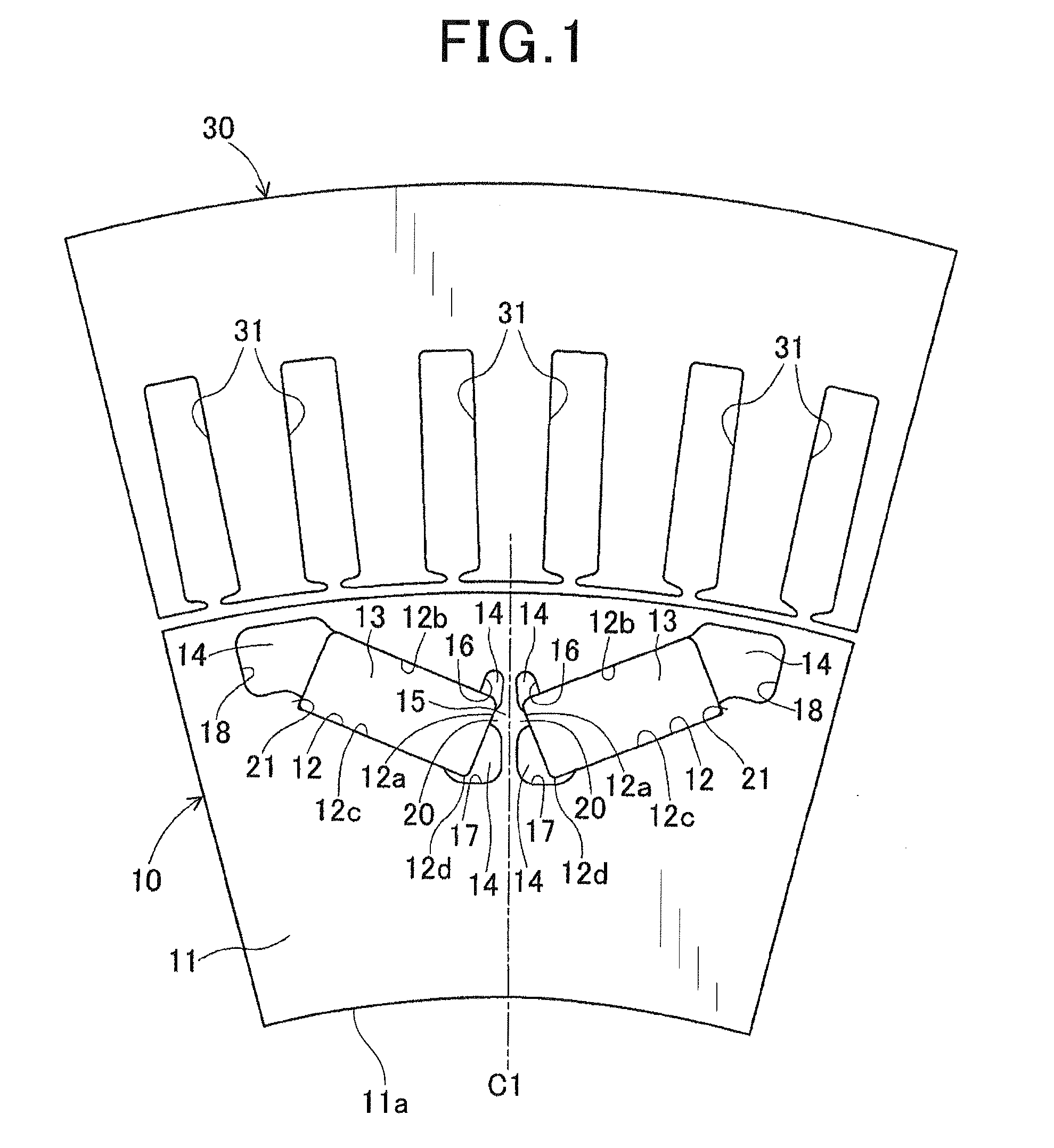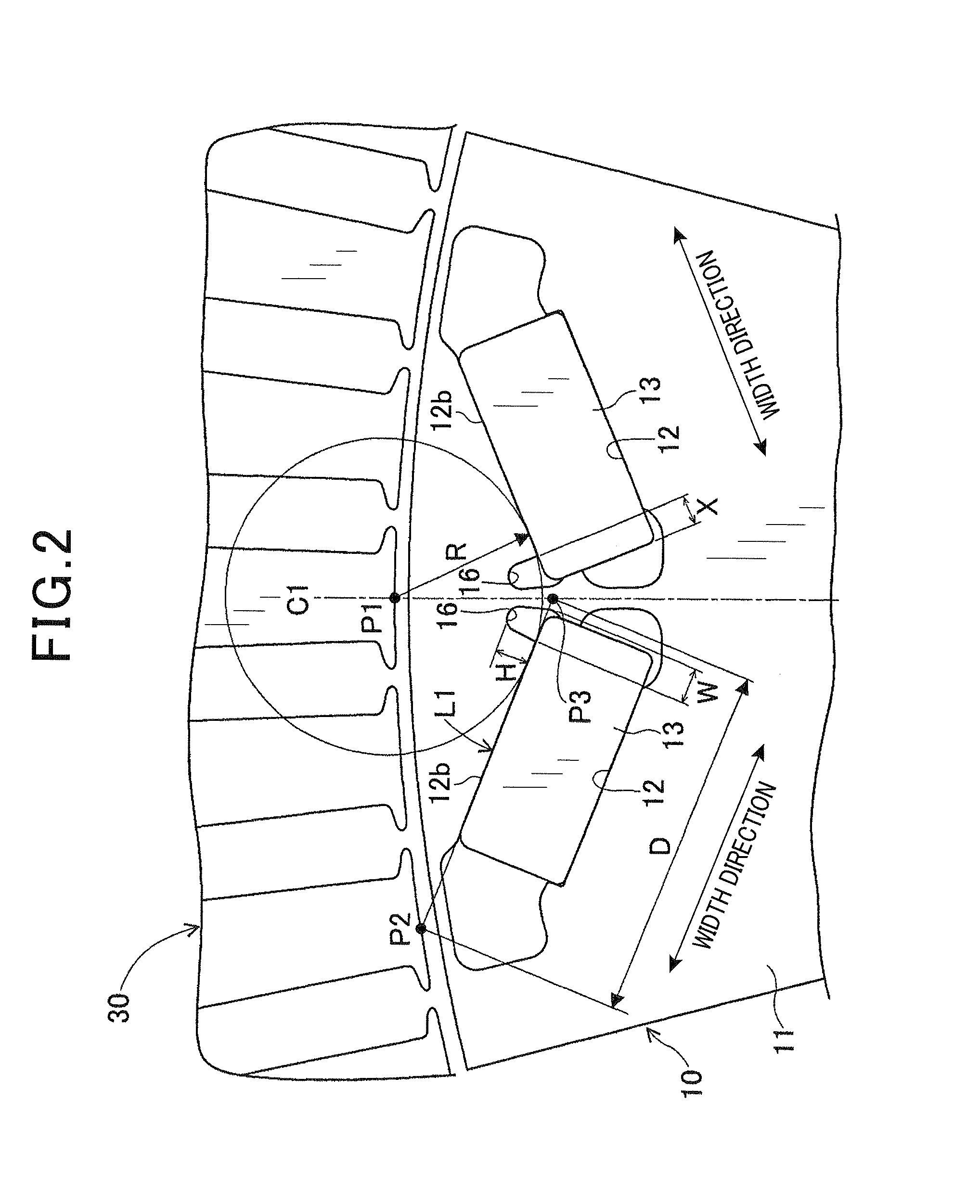Rotor for rotating electric machine
a technology of rotating electric machines and rotors, which is applied in the direction of dynamo-electric machines, magnetic circuit rotating parts, and shape/form/construction of magnetic circuits, etc., can solve the problem that the technology disclosed in patent document 2 cannot be applied to rotors, and achieves enhanced magnetic flux saturation, reduced magnetic flux leakage, and reduced q-axis inductance.
- Summary
- Abstract
- Description
- Claims
- Application Information
AI Technical Summary
Benefits of technology
Problems solved by technology
Method used
Image
Examples
experiment 1
[0064]This experiment has been conducted to determine the optimal range of the protruding height H of the first magnetic flux barrier 16 in the rotor 10 according to the previous embodiment.
[0065]Specifically, in the experiment, a plurality of sample rotors were prepared, all of which had the same configuration as the rotor 10 according to the previous embodiment. However, for those sample rotors, the dimensional ratio H / R was varied in the range of 0 to 0.5. Here, R is the minimum distance from the intersection P1 to the second wall surface 12b of the magnet-receiving hole 12 (see FIG. 2). Then, each of the sample rotors was tested to measure the q-axis inductance, the amount of effective magnetic flux and the torque of the motor.
[0066]FIG. 3 shows the change in the measured q-axis inductance with the dimensional ratio H / R. FIG. 4 shows the change in the measured amount of effective magnetic flux with the dimensional ratio H / R. FIG. 5 shows the change in the measured torque of the ...
experiment 2
[0070]This experiment has been conducted to determine the optimal ranges of the width W of the first magnetic flux barrier 16 and the overlapping width X in the rotor 10 according to the previous embodiment.
[0071]Specifically, in the experiment, three different types of sample rotors were prepared. The first-type sample rotors had the same configuration as the rotor 10 according to the previous embodiment. The second-type sample rotors have a configuration as shown in FIG. 6, in which the first magnetic flux barrier 16 is formed away from the corresponding permanent magnet 13 toward the centerline C1 side. The third-type sample rotors have a configuration as shown in FIG. 7, in which the first magnetic flux barrier 16 is formed so as to adjoin the centerline C1-side end surface of the corresponding permanent magnet 13.
[0072]First, the first-type, second-type and third-type sample rotors, for which the dimensional ratio W / D was varied in the range of 0 to 0.25, were tested to measure...
PUM
 Login to View More
Login to View More Abstract
Description
Claims
Application Information
 Login to View More
Login to View More - R&D
- Intellectual Property
- Life Sciences
- Materials
- Tech Scout
- Unparalleled Data Quality
- Higher Quality Content
- 60% Fewer Hallucinations
Browse by: Latest US Patents, China's latest patents, Technical Efficacy Thesaurus, Application Domain, Technology Topic, Popular Technical Reports.
© 2025 PatSnap. All rights reserved.Legal|Privacy policy|Modern Slavery Act Transparency Statement|Sitemap|About US| Contact US: help@patsnap.com



